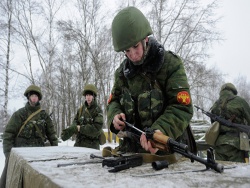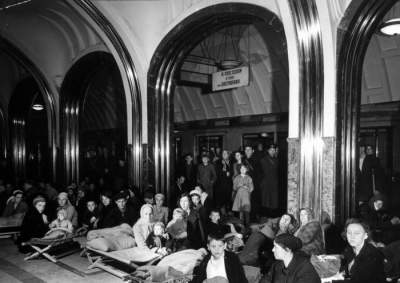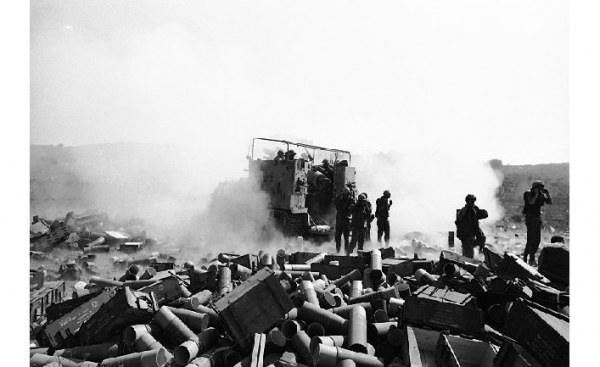
July 14, 1941, was first involved catching the horror of the missile weapons of the red Army. Katusha appeared to be incredibly effective due to the destructive force and psychological factors.
The noise doesn’t kill, at least not directly. And, despite this, it can be an incredibly effective weapon — namely, the psychological. The fact of the Second world war there are at least two accurate examples.
In the first two years of the war siren German stormtroopers instilled panic in the enemy. Their yelp promised a direct hit. No one knows how many poles, the French or the British, Yugoslavs, and Greeks fear left their positions and because of this died.
Until mid-July 1941 on the side of the opponents of Germany were not comparable psychological weapons. But then came captain Ivan Flerov and BM-13.
The abbreviation hid simple design: truck launchers for medium-missile guns of caliber of 82 or 132 mm. Fuel from special powder weapons engineer Ivan grave, in principle, developed during the First world war. In the 30-ies of all this, there was the prototypes of missiles “air-land”.
But quickly ready to use steel ground launcher mounted on trucks or tractors. The first test of a new weapon at the time of the starting of the guide took place on 7 June 1939; present people’s Commissar of defense, Kliment Voroshilov, was impressed by the effectiveness of weapons. In late 1940, the first launcher was received for testing to the troops. Launchers mounted only on motion of the trucks that were doing unnecessary costly installation in the lateral direction. After making minor changes to the Soviet General staff in may 1941, approved the initiation of mass production of plants.
In the first three weeks of the German-Soviet war the rocket launcher, however, has not been applied — it is not clear why. That all changed only on 14 July 1941. The week before Flerov, a 36-year-old graduate of the Soviet artillery Academy, received a half-dozen trucks with the launchers, as well as the first 3,000 rockets caliber 132 mm.
While at the industrial city of Orsha, on the Dnieper, in Belarus, the battle was raging, the Soviet scouts found a suitable target for the new weapon, known as the BM-13 in their range they stopped to rest the German truck units supply, transporting mainly fuel and ammunition. A relatively big target, perfect for not distinguished by high accuracy, but large blast radius of fragmentation warheads missile warheads.
He gave the order “Fire!”, and a few seconds more than 100 rockets gave the German enemy “bloodbath”. The effect differed from that of normal artillery fire: comparable secondary battery of field guns for the same number of shots took a few minutes — the time during which the enemy could go to the shelter, to leave or to return fire. A massive volley released within a few seconds of rockets, in contrast, were not given time to respond.
However, the effectiveness of certain warheads in the low rate compared to cannon artillery was less, but the production of projectiles for a brief period compensated. For anti-tank and bunkers fragments named by analogy with the Russian smash hit “Katyusha” rockets were not good (unless it was a direct hit), but no secure trucks and, of course, the infantry was in extreme danger.
After the first attack he had realigned its battery and the second salvo destroyed the bridge across the Dnieper. The German 17th Panzer division for three consecutive days could not go further; because of the shock from the action of new weapons or lack of fuel — is unclear.
In any case, in the following weeks was that the Red Army thanks to the BM-13 and the simplified variant of the BM-8 was positioned extremely effective new weapon. Along with direct effect, it was about fear of the German soldiers that occurred as I heard the characteristic howl quickly released each other’s missiles.
Shells reached first increasing and then decreasing airspeed to a maximum of 355 meters per second, so the sound is on average, was faster projectiles themselves. Thus, depending on the distance of the shot (from 5.5 to 8.5 km) between the sounds of shots and the first hit took a few seconds — enough time for a massive panic attack the soldiers, even if the shot is not on them or their positions.
The German army quickly spread the respectful name of the weapons of the enemy: “Stalin’s organ”. This was due to the similar sounds on the sound of the shot, and launchers on trucks, reminiscent of organ pipes. In late autumn, Soviet factories were sent to the front large quantities of material reinforcement, up to 1,000 trucks with the starting units and half a million shells; now rocket artillery occupied an extremely important place in the plans of the red Army.
However, captain Ivan Flerov did not live up to the success of the new weapons: 7 October 1941, German mortars fired at his position. Due to the marshy soil to get away from the fire, he could not. The captain shot all your ammo and gave the order to undermine the BM-13. Then he died, with three fourths of his squad. But “Stalin’s organ”, along with the T-34 tank was the most formidable weapon of the red Army: deadly for tens of thousands of German soldiers and at the same time psychologically devastating for millions.








